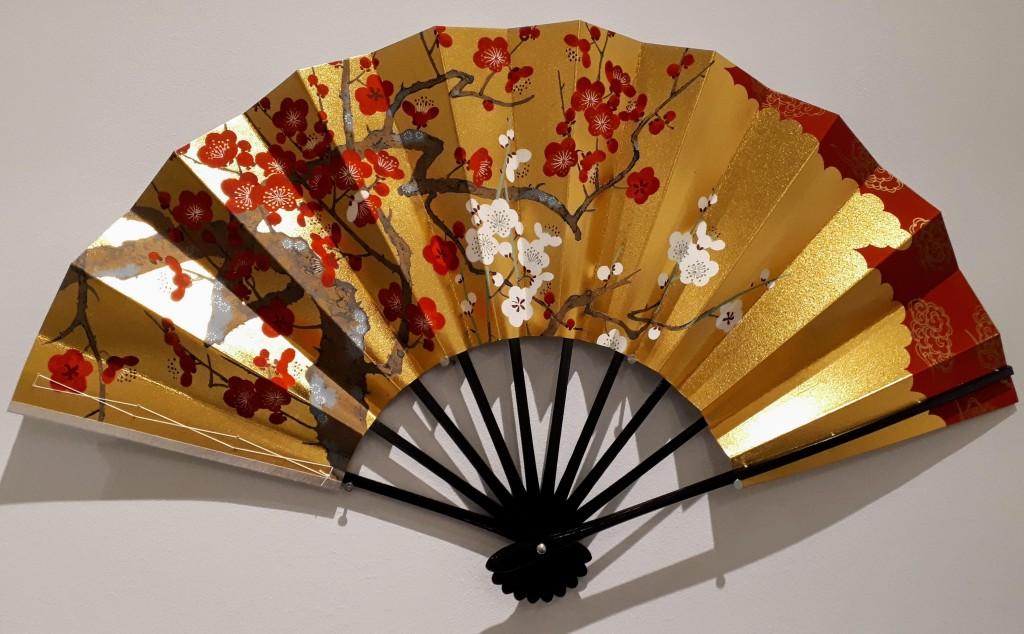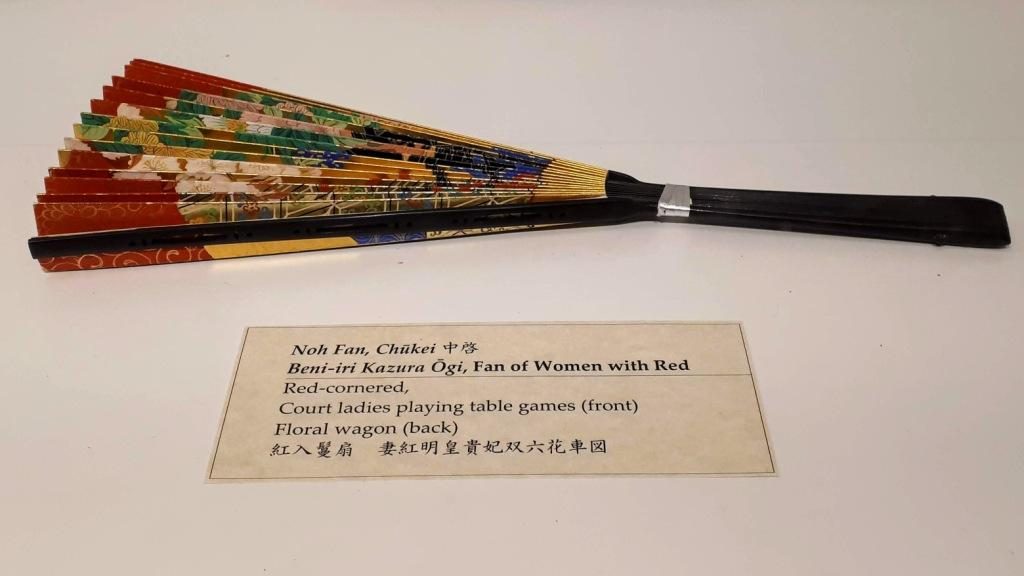As I’ve mentioned before, one of the joys of this 100 Museums Challenge is discovering new places I hadn’t known about before. One such is The Japan Foundation in Toronto at Yonge & Bloor.
The Foundation’s facilities include a wonderful library and a gallery with changing exhibits, the current one being Fans Onstage. The exhibit is gorgeous in its simplicity, letting the Japanese handheld fans do most of the talking.
Last night I was treated to an informative tour and talk by Japanese Foundation Program Officer Toshi Aoyagi, organized by the Ontario Library Association’s Special Libraries Committee. Mr. Aoyagi explained how the use of fans in Noh theatre contrasts with that in Kabuki theatre. From the brochure:
On the contrary, in Kabuki theatre – founded in the early 17th century – the actors’ wrists and arms are freely moving their fans. In Kabuki, the external effects are established by fans, reflecting commoners’ aesthetics. This is the opposite of the Noh theatre aesthetic which reflects Samurai warriors’ philosophy. In Kabuki dance, performers turn their fans from front to back quickly, or create swaying waves, maneuvering their fans with their arms and wrists. They even toss fans into the air and catch them.
The exhibit is a feast for the eyes, and a very interesting entrée into learning about Japanese culture.

The Japan Foundation Gallery is museum no. 73 in my #100museums challenge (see 100 Museums Challenge).

